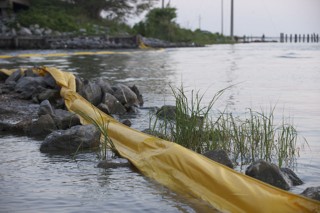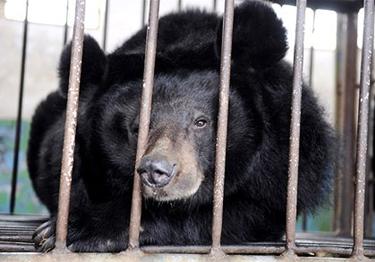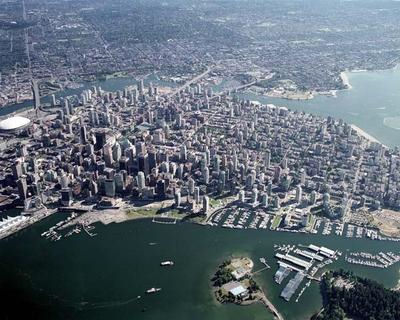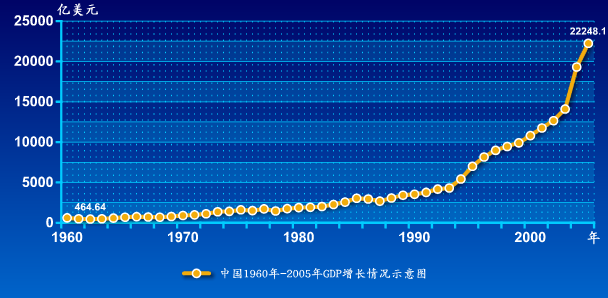
Photos of Acacia and Lily kangaroos are by Brett Clifton
A professional review of the ACT Kangaroo Management Plan by Professor Steve Garlick MCom (Econ), PhD, FAUCEA
Summary:
The ACT Kangaroo Management Plan significantly, and disturbingly, fails society, the economy and the environment in the ACT and its contiguous region in numerous ways. In many respects it is a dishonest, unscientific, inconsistent, biased and unethical report that perpetuates ignorance of the place of humans in the natural landscape and fosters a culture of disrespect and harm.
From a societal and learning perspective the Plan:
• seeks to widen the physical and psychological separation between humans and nature;
• condones animal cruelty as a management goal;
• seeks to put total control over the general public’s common good assets in the hands of the ACT Government;
• incites the use of firearms and violence as a means of solving perceived environmental problems;
• ignores the emotional distress inflicted on sections of the community by its proposals;
• suggests no place for an education program to enhance our knowledge of a creative eco-literacy that fosters hope rather than destruction;
• offers little in the way of sympathetic urban planning; skates over occupational health matters;
• undervalues economic implications; and disregards international opinion and concerns.
From an environmental perspective the Plan:
• fails to provide an ecological end-point as a goal for its recommended actions against the kangaroo;
• fails to identify any integrated ecological monitoring framework to ensure continuous improvement in ecology over time;
• disregards the metaphysical aspects of the landscape and its importance for Indigenous Australians and others who respect and wish to connect with this ancient and unique land and its natural inhabitants.
From a scientific perspective the Plan:
• disregards research that demonstrates that kangaroo killing is a short-term and ineffective instrument;
• ignores evidence that successful kangaroo translocations from difficult and unsafe urban and peri-urban areas have been carried out;
• accepts research from other regional locations as explanatory of the often argued to be ‘unique’ local grassland systems, because there is no professionally-recognised local science on the mutual dependence of kangaroos and grasslands;
• relies on survey estimates of kangaroo numbers that are almost certainly wildly inaccurate;
• bases its research conclusions on ‘association’ and the circumstantial rather than on causality;
• erroneously refers to the research of others, such as in relation to the connection between road accidents and kangaroo populations;
• is inconsistent with other conclusions its representatives have stated in other public fora, particularly in the area of ‘research’ on kangaroo movement;
• assumes the kangaroo provides no net positive benefit to the landscape without any evidence to support this;
• provides resident survey results that are distorted by their dependence on questions based on incomplete information.
From an economic perspective the Plan:
• does not undertake any formal cost/ benefit analysis and conveniently downplays the tourism potential of kangaroos, despite the considerable national and international evidence that highlights the significance of wildlife as a global tourism competitive advantage;
• dangerously further concentrates the dependence of the ACT economy and its budget bottom line on land development (and therefore habitat destruction) for housing and commercial expansion;
• further diminishes any ‘points of difference’ Canberra might have had globally as a medium-sized city existing in harmony with its natural environment, and is consistent with steering the national capital in a direction that is no different to the ugliness of other urban sprawl and motor vehicle-dominated cities.
Key findings:
The draft ACT Kangaroo Management Plan significantly, disturbingly and dishonestly, fails society, economy and the environment in the ACT and its contiguous region in the following ways:
Failures for Society and Economy:
1. The Plan seeks to widen the gap between humans and nature by promoting further physical and psychological separation.
Increased urban concentration, rural subdivision and rapid transit highways in the ACT and surrounding rural areas have increased the psychological and physical distance between humans and wildlife. Human habitation in the ACT is becoming more and more estranged from nature, and fewer ACT residents have regular, if any, direct contact with the indigenous wildlife of the region. The result of this is that people do not have the ability to observe and admire, but rather see all forms of wildlife, particularly if large or poisonous, as threatening, and want them removed. Such behaviour is not conducive to any notion of ‘bush capital’, respect for ‘otherness’, or to a healthy and sane outlook on life. Similarly, any international visitors who wish to see kangaroos in the ACT are required to make the half-day journey to the Tidbinbilla ‘Nature Reserve’ (where kangaroos are also ‘culled’)for this experience. Various tourism studies of Tidbinbilla remark on this disadvantage.
2.
The Plan fails to honestly portray the welfare aspects associated with its recommended actions to reduce kangaroo numbers. It therefore condones animal cruelty.
The myth that a single gunshot to the head of a healthy kangaroo is humane animal welfare needs to be rejected outright. Even if we accept the unrealistic assumption that a kangaroo shooter will be one hundred per cent accurate, what actually happens in practice is more than enough to convince us that kangaroo shooting is inherently cruel. The report: A Shot in the Dark, by Dr Dror Ben-Ami dispels the myth of kangaroo shooter accuracy.
When its mother is ‘humanely’ shot, the orphaned ‘pouched’ joey is ripped from its mother’s pouch, decapitated, stomped on, or swung repeatedly against the nearest hard object until its head is crushed and its fragile limbs fractured. This is a brutal and dark aspect of ACT Government policy of which few residents appear to be aware. The ‘at-heel’ offspring of the dead mother is deprived of its mother’s company, milk and protection and forced to flee and fend for itself against predators such as foxes and marauding dogs. When large male kangaroos are killed the social structure of the mob is destroyed, one consequence of which is a lack of control over the behaviour of juvenile males towards immature females.
Even if not killed outright, the fleeing, fearful and possibly injured kangaroo will often die a lingering and excruciatingly painful death, which could take months. Pain, exertion and anxiety create physiological and biochemical changes in metabolism leading to lactic acidosis and muscle damage, including to the heart muscle, the release of myoglobin, renal failure, tissue hypoxia, paralysis, and progressive damage to the liver, adrenal gland, brain and lymphatic system. No fair-minded human with an ounce of compassion could possibly believe there is anything ‘humane’ in any of this, but it is doubtful that ACT Government surveys of residents’ perceptions of kangaroos include this information.
3.
The Plan fails the common good.
The ACT Government actively promotes the killing of perfectly healthy orphaned kangaroo joeys because it is perceived that they represent a problem for local grasslands, which ironically are often scheduled for development. ACT Government rangers regularly kill infant orphaned kangaroos by smashing their bodies against hard objects. They will not hand these joeys over to experienced carers. The RSPCA similarly kills orphaned kangaroo joeys that are brought to them in good faith by the general public.
Kangaroos, and all other native animals, are ‘owned’ by the Crown, not by governments, farmers or anyone else. Wildlife enhances the common good assets of all the citizens of our nation. This is why our unique wildlife is the second most important reason why international tourists come to this country. Sadly, killing of kangaroos in this Territory and in this country has become such an ingrained cultural pastime that it is now the largest single mammal slaughter in the world. Governments are given responsibility for protecting and enhancing our common good assets. They are not given carte blanche to degrade or diminish these collective assets, whether they are kangaroos, other wildlife, air, water, or any other important elements of our natural world. The Plan does not appreciate the universal significance of the wildlife it seeks to diminish.

4.
The Plan presents to society an ethical view that solutions to human-perceived ‘problems’ in the environment are best dealt with using firearms and violence.
The Plan presents a view that kangaroos need to be killed by shooting and where healthy joeys are killed by painful and stressful heart puncture without sedation.
The so-called ACT Code for the Humane Destruction of Kangaroos, even if it was considered ethical, is not adhered to in the killing programs overseen by the ACT and other governments. The herding and consequent stress and injury that occurred at the Belconnen Naval Transmission Station (BNTS) slaughter several years ago, without any consideration by government, is testament to this. The evidence of blatant kangaroo brutality in the form of harassment, continual herding, stress, pain, terror and separation, apparently overseen and approved of by a national animal welfare body, veterinarians and government officials, was totally inconsistent with Codes of Practice and completely unethical. The Plan does not provide a compassionate perspective toward wildlife. The disconcerting statements at page 95, 4.61b proves the ACT Government and its employees endorse illegal and harmful action according to the requirements of the Code of Practice as shown in the available video evidence of the herding undertaken by ACT Government employees at BNTS. Such government endorsement to harm encourages and incites the unscrupulous, the mentally disturbed, and the brutal to maim and kill wildlife illegally for their ‘pleasure’, whether by the use of firearms or other weapons of destruction. Peer-reviewed literature demonstrates a strong connection between animal cruelty and cruelty to humans. Mass murderers Ivan Milat and Martin Bryant, among others, had previous records of cruelty to animals, and child and spouse abuse in the home are often connected to episodes of animal cruelty by male adults.
Those of us who spend a large part of our lives caring for other beings are profoundly affected by the harshness, cruelty, and brutish and blustering forcefulness in the language, reports and actions of uncaring and unknowing institutions, their ‘leaders’, and their paid acolytes in our local communities and extended society. Kindness, compassion, respect, giving, and a willingness to closely observe and learn are the qualities required of a good carer, a decent society and a respected and admired leader. Neoliberalism and its disciples have instead given us institutions and leaders that demonstrate meanness, self-interest, greed and a disregard for the other dressed up in bureaucratic and political spin, in the name of the euphemisms ‘economy’, ‘management’ and ‘conservation’.
A better society is when a gentle hand is extended to all beings to give a second chance, where there is kindness and respect, where suffering is relieved and when hope and opportunity flourish through interconnectedness. There is no respect for ‘economy’, ‘management’ and ‘conservation’ meted out with a gun and its associated nastiness. Conservation underpinned by cruelty is still cruelty. If there is no heart and no soul in this place and economic rationalism and complacency are the order of the day, society is diminished and unattractive.
5.
The Plan promotes emotional distress for humans.
Knowing that a deliberate and cruel program of killing kangaroos and their joeys is being carried out is emotionally distressing to many humans. The slaughter of the kangaroos at the BNTS several years ago had a substantial emotional impact on the lives of many people in the ACT and surrounding areas, and many have sought ongoing medical attention as a consequence. The kangaroo killing program at Majura had a similar impact on those who are caring and compassionate in our society. By advocating more shooting of kangaroos and brutal destruction of their young, this Plan and the ACT Government are derelict in not recognising this emotional distress, and may be held accountable for the emotional health of many people in the region should this become a legal challenge.
6.
The Plan fails to offer any mechanism of ecological learning that will ensure a sustainable future based on possibility and hope, rather than one based on destruction.
The Plan seeks to centralise ‘control’ of the environment with Government. However, if the planet we all live on is to survive, a concerted effort by all its inhabitants to enhance sustainability is required. Teaching and learning of an eco-literacy and initiatives to implement good living practice through our education systems are therefore significant. This Plan does not deal with wider questions of eco-literacy within any broad-based learning framework and therefore is deficient as a tool for environmental sustainability in the ACT and surrounding region.
7.
Urban planning failure.
The Plan is primarily concerned with kangaroos eating grass. Of course there is nothing magical about that observation. However, the simplistic tenor of the Plan is to remove the kangaroo from its natural grassland habitat to enable development, without any strategy for habitat enhancement elsewhere. The default solution is always to kill the kangaroo, or to tinker with its biology through misplaced sterilisation programs, rather than to seek creative habitat-enhancing initiatives and wildlife corridors that facilitate better integration of nature and humans. Current ACT planning initiatives are focused on separating humans from nature and there are no planning initiatives to ensure wildlife safety, in particular of the kangaroo, in the face of rapid urban sprawl across the landscape. The ACT could well learn from the experiences of many other cities around the world which are bringing nature back into central urban areas because it has been demonstrated that such interaction is good for both humans and wildlife.
8.
Community health and wellbeing.
The Plan fails to consider the human distress caused by killing perfectly healthy orphaned kangaroo joeys, as sanctioned by current ACT policy. ACT Government rangers, the RSPCA ACT, and some ACT veterinarians, use barbaric methods to kill these infants (bludgeoning, decapitation, heart puncture without sedation etc.).
9.
The Plan fails to consider economic options.
The ACT economy is heavily dependent on a very narrow revenue stream from land development for housing and commercial purposes.
Tourism is an important industry and much more could be achieved in this area to enhance the economically-vulnerable nature of the ACT. Wildlife tourism is the second most important reason why international visitors come to Australia. However, Canberra is not taking advantage of this. In Canberra, any wildlife tourism is currently restricted to the Tidbinbilla Nature Reserve, which is a half-day visit away, not realistic for any tourists seeking to cover as much as they can in a short visit to the national capital. Visits to the Tidbinbilla Nature Reserve are few, and even many school excursions to Canberra bypass this facility. The KMP does not consider the value of the kangaroo as an international tourist icon, and the kangaroo killing attitude of Canberra has made many international visitors decide not to visit the national capital.
McLeod (2004) found that Australian wildlife helped secure over $1.8 billion in inbound tourist dollars, and more than 14,000 jobs in the tourist industry. McLeod also estimated that the ‘costs’ associated with kangaroos, such as loss of production, vehicle damage, research etc. amounted to only $76 million.
There is more than an intimation in the Plan that the increase in kangaroo-related motor vehicle accidents is due to an increase in kangaroo numbers in and around the ACT. This would be an incorrect conclusion from the research that has been undertaken by Dr Daniel Ramp on this topic. Having read all Ramp’s work on traffic accidents and animals, I note that not once does he draw any conclusion that an increased number of traffic accidents reflects a change in size of the local kangaroo population. Quite the reverse, Ramp points to increased traffic flow, driver risk-taking behaviour, road design, vehicle engineering and animal habitat fragmented by human action as likely culprits.
While the KMP undertakes no cost-benefit analysis it is able to intimate through its extensive discussion of motor vehicle accidents that it is this factor and not tourism that is the significant determining variable in any economic impact analysis. Any serious cost-benefit analysis that includes the benefits of tourism, which only gets a few lines in the KMP, would overwhelmingly suggest that the economic benefits outweigh any economic costs.
10.
Legal perspectives.
A submission by the NSW Young Lawyers Animal Rights Committee in response to the NSW draft Kangaroo Management Plan (2001) argued that the Government had a role in actively re-educating the public, firstly to dispel the myth that kangaroos pose a threat to environmental and grazing interests, and secondly to remind Australia that it loses moral authority overseas on issues such as ’scientific’ whaling, and the slaughter of seals as a result of its ongoing wildlife massacres.
11.
International reputation.
There is no doubt that the slaughter of kangaroos at the BNTS, within sight of Australia’s Parliament, and at Majura, has had a significant deleterious effect on international perceptions about the way in which Australia treats its wildlife. These negative international perceptions will be hard to overcome and the ACT KMP simply seeks to make these perceptions more entrenched by condoning, and even encouraging, ongoing cruelty to the kangaroo, our national icon.
Failures for the Environment:
12.
The Plan fails to provide an ecological end point as a goal for its recommended actions against the kangaroo.
How will we know whether the stated recommendations of the KMP, if implemented, will actually contribute to enhanced ecological value if there is no target ecology articulated? What is the target ecology sought and how do we know that killing large numbers of kangaroos will contribute to this optimum ecological outcome, and to what degree? Simply taking two elements (the kangaroo and grasslands) out of the ecological system for analysis and intervention is completely unsatisfactory, when we all know there are many interconnected elements in a regionalised ecological system. Rather than ‘regionally endanger' one species (the kangaroo) in the hope that other 'threatened' species might become 'abundant', would it not make more ecological sense to focus on bringing the whole system into equilibrium by basing action on a full and thorough site- specific whole-of-ecosystem analysis? The Ramp and Roger paper: Our ‘common’ wildlife may be the next ‘sleeping’ threatened species, adds significant weight to this proposition.
The argument that it is morally acceptable to sacrifice one native species (the kangaroo) considered ‘overabundant’ in order to help others considered ‘endangered’ or ‘threatened’ cannot be argued on ethical grounds if kangaroos were properly recognised not as objects or automata but as sentient beings that suffer as humans do. The laws of the land in most societies would not allow such actions if we were talking about ‘the other’ in the form of humans and not animals. We have seen this hierarchical construction of self-meaning in the various Canberra kangaroo killing events in the last few years at the BNTS, Majura, Callum Brae and elsewhere. We see the same deficient ‘moral’ argument put forward by politicians and others in relation to the so-called kangaroo ‘harvesting’ industry and any association it might have with traditional agriculture production, and in the extraordinary statement by Garnaut that we ought to substitute kangaroo for beef in our diet to save the planet from climate change, when clearly the largest contributors to greenhouse gas emissions are anthropogenic, not wildlife!
13.
The Plan fails to identify any integrated ecological monitoring framework for the future, based around its recommended actions to ensure continuous improvement over time.
The Plan offers no ecological temporal markers or frameworks for ongoing and rigorous monitoring to assess whether the claimed environmental benefits from reducing kangaroo numbers will eventuate. At a bare minimum, this is needed for transparency and accountability, but it is also required to ensure that continuous improvement is achieved and maintained.
14.
The Plan deals only with the narrow biophysical and fails to consider the metaphysical of landscape meaning.
It is a sad fact that non-Indigenous Australians have a long-standing disregard for their adopted country’s unique wildlife and in particular for the kangaroo. Indigenous Australians have recognised for millennia the close emotional and mythological association with the kangaroo that gives fundamental meaning to the landscape we all occupy. The Plan considers none of this metaphysical landscape understanding.
15.
‘Culling’: A blunt instrument with only short-term local impact.
The report by Olsen, P., and Low, T. (2006), “Update on Current State of Scientific Knowledge on Kangaroos in the Environment, Including Ecological and Economic Impact and Effect of Culling”, for the NSW Kangaroo Management Advisory Panel, suggests there is scant evidence that ‘harvesting’ (or culling) controls numbers, or mitigates perceived vegetation damage, except very locally, and that ‘culling’ is unlikely to be effective in anything but the very short term.
16.
Inappropriateness of Translocation.
The Plan argues that from a ‘welfare’ and cost perspective the translocation of kangaroos and the creation/maintenance of corridors from areas identified for development (e.g. the BNTS, Majura Valley, Molonglo Valley), or in order to reduce perceived urban/ rural impacts (e.g. on farmers) is inappropriate.
However, wildlife relocation is an everyday occurrence around the world, carried out by zoos and other institutions. In Australia, translocation of kangaroos with success is also a common occurrence, although many such exercises have not yet been written up in peer-reviewed literature. Dr David Croft (per comm.) has stated “…there is sufficient information on the Eastern Grey Kangaroos’ status and biology in the wild to confidently conduct a translocation.” Campbell and Croft (2001) described the translocation of twenty hand-reared Eastern Grey Kangaroos near Mudgee.
There are also a number of articles reporting on the success of translocations in Tasmania, Victoria and New South Wales (eg Short et al 1992, 1995 Delroy et al 1995, Campbell and Croft 2001, Higginbottom and Page 2008, Tanner and Hocking 2001). In the local region the translocation of large and small macropods is a common occurrence. My 60kg wife and I do this regularly, with complete success for the animals concerned. We have now performed hundreds of these translocations (refer: Austen, R (2008). “Macropod fence injuries”, Paper to the National Wildlife Rehabilitation Conference, Canberra). In the past 18 months we have translocated and tracked 100 rehabilitated wild and semi-wild kangaroos back into the wild, with a 98% success rate (publication forthcoming: “Kangaroo Translocation: Program effectiveness and welfare goals”, International Journal of Animal Welfare Science and the National Wildlife Rehabilitation Conference, 2010). It is dishonest to state in the KMP that kangaroo translocation of wild kangaroos cannot be successfully carried out.
17.
‘Outside’ science used to justify local circumstances.
The Plan, while emphasising the significance of the regional grassland circumstances in the ACT, fails to support its recommended local actions with completed and peer-reviewed scientific findings that relate directly to these same regionalised situations. Instead, the Plan draws from peer-reviewed research undertaken in other regions. If we are at all concerned about the ecosystems of the ACT there needs to be analysis of them in situ, rather than dragging in findings from other ecosystems, and importantly this research needs to be peer reviewed. It is just not satisfactory to waive this aside by saying it is not needed for policy analysis, as stated in the KMP. There has been ample time for the ACT to undertake research of peer-reviewed standard on the topic of kangaroos and their interactions with ACT temperate grasslands.
18.
Use of the DSE.
The use of the dry sheep equivalent (DSE) is not logical as a proxy for kangaroo grazing within an ecological context. Why would the eating behaviour of an introduced, herded, hard-hoofed farm animal be used as a proxy for a native, free-living, soft- footed animal? Unless there is definitive kangaroo-specific, peer-reviewed, science the Plan’s conclusions about kangaroo impact will not be accurate.
19.
The Plan’s data on kangaroo numbers has significant inherent error.
In calculating kangaroo numbers the analysis in the Plan accepts very high levels of coefficient variation. Survey data with this level of sample error are not at all convincing. More importantly, the calculated numbers take no specific account of age, size, physical condition or gender of the animals, the changing characteristics (water, grass, shelter etc.) over time of the land on which the kangaroos reside, and how kangaroos move across the landscape throughout the day and the seasons in response to many factors (wind, heat, cold, feeding time, resting time, breeding time, fires, water supply, human presence, predator presence etc,). It is a significant error to assume that a single head count at a single point in time in a number of set locations, whatever the method used (transect, distance sampling etc.), will accurately account for any of these variables, and therefore how kangaroos spread across the available landscape at other points in time. Conclusions from this analysis about kangaroo ‘overabundance’ or otherwise, density, or any increase or decline in numbers over time are thus spurious.
20.
The Plan ignores the counterfactual
If kangaroos are being charged with eating too much grass in the ACT, where is the local peer-reviewed analysis that shows the specific local impact on this grass when numbers are reduced or completely eradicated, as in the case of the former BNTS site at Lawson? What is the optimum grass cover sought and how will the positive influences kangaroos have brought to grasslands for millennia be replicated when the grasslands are without kangaroos? Mowing, spraying, and hard-hoofed production animal agistment will not do this. The Plan considers the ‘eating grass’ aspect of the kangaroo, but does not consider the other attributes that add value to the grassland it has traditionally inhabited.
Grasslands were used as the final excuse for killing at BNTS. Subsequently, the toxic waste assessment report said that most of the grasslands would have to be dug up for remediation, and that seeds would need to be collected in order to re-vegetate after the bulldozers and trucks had completed their soil removal work. If this is possible, these grasses are clearly not as sensitive as we all have been led to believe. In other words, if degradation of 'sensitive' grasslands in the ACT is to be attributed to kangaroos, simply fence off the affected areas and undertake re-vegetation programs. Similarly we were led to believe that at Majura the kangaroos were damaging the ‘pristine’ grassy woodlands, but this woodland area is also heavily infested with noxious weeds.
21.
Inconsistent evidence
When the ACT Government gave evidence to the ACT Administrative Tribunal during the hearing about kangaroos at the Majura Firing Range it stated (at paragraph 77 of the decision transcript): ‘…that EGKs tend to be relatively sedentary and loyal to a particular area’. However, in the ACT Government’s Kangaroo Management Plan (page 134) the notion of ‘site fidelity’ is dropped when it says there is a clear net movement of kangaroos between government reserves and private leasehold rural land. Which is it to be? Are they sedentary, or do they (as common sense would dictate) travel in search of food?
22.
Disingenuous literature review
One has to wonder about the professionalism of the ‘science’ in the KMP when there is an apparent reluctance to submit work to peer review but where at the same time there is no hesitation in discounting the work of other well-respected researchers with literally dozens of peer-reviewed papers on the subject. On page three of the ACT Government Kangaroo Management Plan, for example, criticism is levelled at Dr David Croft. But it is Croft who has demonstrated his professional credentials in the eyes of many external reviewers. Indeed, Dr Croft's most recent paper was published in 2009 and appears to be a valuable comparison of the grazing pressure of red kangaroos and sheep.
22.
KMP Peer Review Process
Public statements by the ACT Government in relation to the release of the KMP suggest it has been ’peer reviewed’ by Dr Graeme Coulson, in the hope that it might give the document some professional credibility in the community. In a small quote from Dr Coulson’r review statement to the ACT Government, it is noted [quote from ACT information release April 2010] that the “…use of the scientific literature is measured and pertinent; no key paper is missing”. While this statement is far from being one of overwhelming support for the KMP, it has to be noted how strange it is that a Plan that seeks to address environmental, social and economic matters in relation to the ACT should be reviewed by just one person with no professional or academic credentials in the areas of economy or society and only a narrow band of environmental management expertise limited to the ecology of kangaroo behaviour.
23.
ACT Government Responses to Draft Plan Submissions.
In April 2010, the ACT Government issued its response to comments raised in some of the 70 submissions it received on the Draft KMP during the consultation period. The response is highly selective in the issues it seeks to raise and in a number of cases arrogantly dismisses them as being from ‘opponents’, rather than accept that perhaps, just perhaps, there might be people among those not supporting the Plan who actually know more about the topic at hand than does the ACT Government. Given that there were more submissions opposed to the Plan than supporting it, this is a lost opportunity for the ACT Government to learn from others.
Conclusion:
The ACT draft Kangaroo Management Plan fails society, the economy and the regional environment in more than twenty important ways. The document is disturbing for its very narrow, short-sighted centralist approach to the region’s ecology. It is weak on matters of ecological sustainability and education in eco-literacy and seeks to allocate control of environmental sustainability to a small group of under-scrutinised and seemingly unaccountable to the public Government officials and their supporters, rather than allowing it to be the responsibility and concern of all residents in the region. The Plan is dangerous in supporting the further concentration of the ACT economy into a narrow dependence on property development rather than a more creative-knowledge driven future where nature might play a, uniquely, central role as distinct from other medium sized cities around the world that are overcome with the ugliness of urban sprawl and the motor vehicle. Finally, the research undertaken by the ACT Government is poor and unethical, being predicated on association and not causality and promoting practice that can be shown to be illegal. A more enlightened approach needs to be taken if questions of environmental sustainability and public involvement are to be taken seriously, honestly and ethically.
Fast forward a generation and where the kangaroo in this country will be and where the ethical and moral value of our community will be are not unconnected. It is a safe prediction that alterity in such future communities like the ACT will be non-existent.





 On Monday 17 May I interviewed William Bourke about himself and his party and his views on the politics of the current population debate. He described concerns about the impact of population numbers since the 1990s, but said that reading the book,
On Monday 17 May I interviewed William Bourke about himself and his party and his views on the politics of the current population debate. He described concerns about the impact of population numbers since the 1990s, but said that reading the book, 



 (Photo: May 4, 2010) Miles of floating barriers are put in place around Mobile Bay and other sites in the Gulf of Mexico to protect the coastline from a growing oil slick approaching the area from the Deepwater Horizon oil spill. U.S. Navy photo by Chief Mass Communication Specialist Joe Kane/Released to Wikimedia commons)
(Photo: May 4, 2010) Miles of floating barriers are put in place around Mobile Bay and other sites in the Gulf of Mexico to protect the coastline from a growing oil slick approaching the area from the Deepwater Horizon oil spill. U.S. Navy photo by Chief Mass Communication Specialist Joe Kane/Released to Wikimedia commons)  (Wikimedia commons)
(Wikimedia commons)










 illustration by Sheila Newman - feel free to make a sticker of it and let us know.
illustration by Sheila Newman - feel free to make a sticker of it and let us know.
 Photo: Uknown homeless female Canadian citizen & Vancouver street resident.
Photo: Uknown homeless female Canadian citizen & Vancouver street resident. 'For many in this city that prides itself on its social contract,
'For many in this city that prides itself on its social contract,  (photo: North Chinese Leopard source: wikimedia commons)
(photo: North Chinese Leopard source: wikimedia commons)




 UPDATE! Since November the 13th Valentin Danilov is a free human being. Now he's at home in Krasnojarsk.
UPDATE! Since November the 13th Valentin Danilov is a free human being. Now he's at home in Krasnojarsk.














 In spite of the fact that 79% of the Queensland public oppose privatisation, 66% would support industrial action to stop the Bligh Government's $15 billion fire sale and many union members have expressed a willingness to strike, the Queensland unions have failed to take the only action that could possibly cause the Queensland Government to change its mind.
In spite of the fact that 79% of the Queensland public oppose privatisation, 66% would support industrial action to stop the Bligh Government's $15 billion fire sale and many union members have expressed a willingness to strike, the Queensland unions have failed to take the only action that could possibly cause the Queensland Government to change its mind.
Recent comments